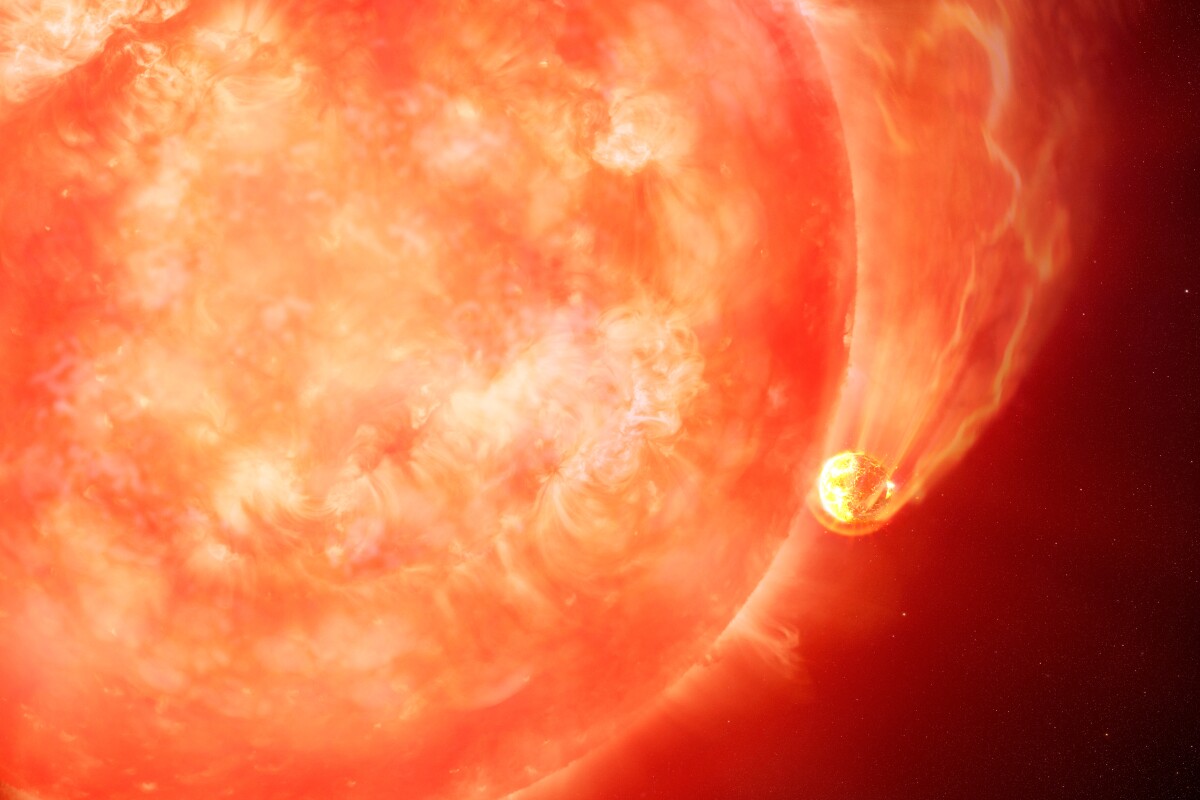
The day has come and we have witnessed the collapse of a planetary orbit into the Sun. Long since anticipated as orbits do wear down over the life of a star. In fact, now that we can detect planets. we also see plenty of decayed orbits. Not uncommon
I actually do not expect an alternative explanation at all.
Our own solar system appears highly stable and also engineered as well. So there must be more to the story. Can a proto planet be generated in the solar gravity well and then as it collects material, can it migrate out to a useful orbit. In fact, do we create the content of a solar system this way? Just asking as a gravity well is useful in terms of going back into DEEP TIME.
Astronomers witness apocalyptic end of a world from across the galaxy
May 03, 2023
https://newatlas.com/space/star-destroying-planet-observed/
Astronomers have observed the first compelling evidence of a dying Sun-like star engulfing an exoplanet, a fate that may befall the Earth when our own Sun nears the end of its life in about five billion years
International Gemini Observatory/NOIRLab/NSF/AURA/M. Garlick/M. Zamani
Astronomers have witnessed an apocalypse from across the galaxy, as a planet crashed into its host star. It’s an event that’s long been assumed to happen in many star systems – including our own someday – but this is the first time it’s ever been seen directly.
Earth has an expiry date: about 5 billion years from now, the Sun will exhaust its hydrogen fuel supply and swell up into a red giant, engulfing Mercury, Venus and probably Earth in the process. It’s a normal stage in the life-cycle of many stars, and given how common we now know planets to be, such a doomsday scenario was assumed to play out across the cosmos on a regular basis.
But it had never been directly observed – until now. Astronomers from Caltech and MIT watched a sun-like star known as ZTF SLRN-2020, located around 12,000 light-years away, swallow up a gas giant about the size of Jupiter over the course of a few months.
The first clues to the story came when the Zwicky Transient Facility (ZTF) observed the star becoming over 100 times brighter over 10 days, then faded again. The original assumption was that it was experiencing a nova, an explosion that occurs when a white dwarf slurps material off a companion star. But closer inspection with the Keck Observatory ruled that out.
“I had been looking for erupting stars called novae,” said Kishalay De, lead author of the study. “But the Keck data indicated that the star was not lighting up hot gas as is expected for novae. I couldn’t make any sense of it.”
So the team went on to check infrared data gathered by the NEOWISE Space Telescope, and found that the star had been getting brighter in infrared light for as long as nine months before ZTF picked up the optical brightening. In fact that infrared glow is still visible today, the team says.
With the pieces in place, the researchers put together the most likely story. The aging star had begun to expand, until its surface reached the orbit of the unlucky planet. Eventually it was close enough that the planet was skimming hot gas off the star’s surface, while the planet also started disintegrating. Material from both objects was flung out into space where it cooled into dust, producing the infrared signature seen by NEOWISE. This dangerous dance lasted about nine months before the inevitable end of the world.
The process of an exoplanet being swallowed by an ancient Sun-like star
International Gemini Observatory/NOIRLab/NSF/AURA/P. Marenfeld
“The planet plunged into the core of the star and got swallowed whole,” said De. “As it was doing this, energy was transferred to the star. The star blew off its outer layers to get rid of the energy. It expanded and brightened, and the brightening is what ZTF registered.”
This incredible story is quite humbling. Perhaps in the distant future aliens will witness Earth’s own Armageddon from afar, and regard it with the same scientific curiosity.
The research was published in the journal Nature. The apocalypse can be seen in the animation below.
Astronomers watch a star engulf a planet
<iframe width="800" height="450" src="https://www.youtube.com/embed/Oq5QdyTwop0" title="Astronomers watch a star engulf a planet" frameborder="0" allow="accelerometer; autoplay; clipboard-write; encrypted-media; gyroscope; picture-in-picture; web-share" allowfullscreen></iframe>
No comments:
Post a Comment